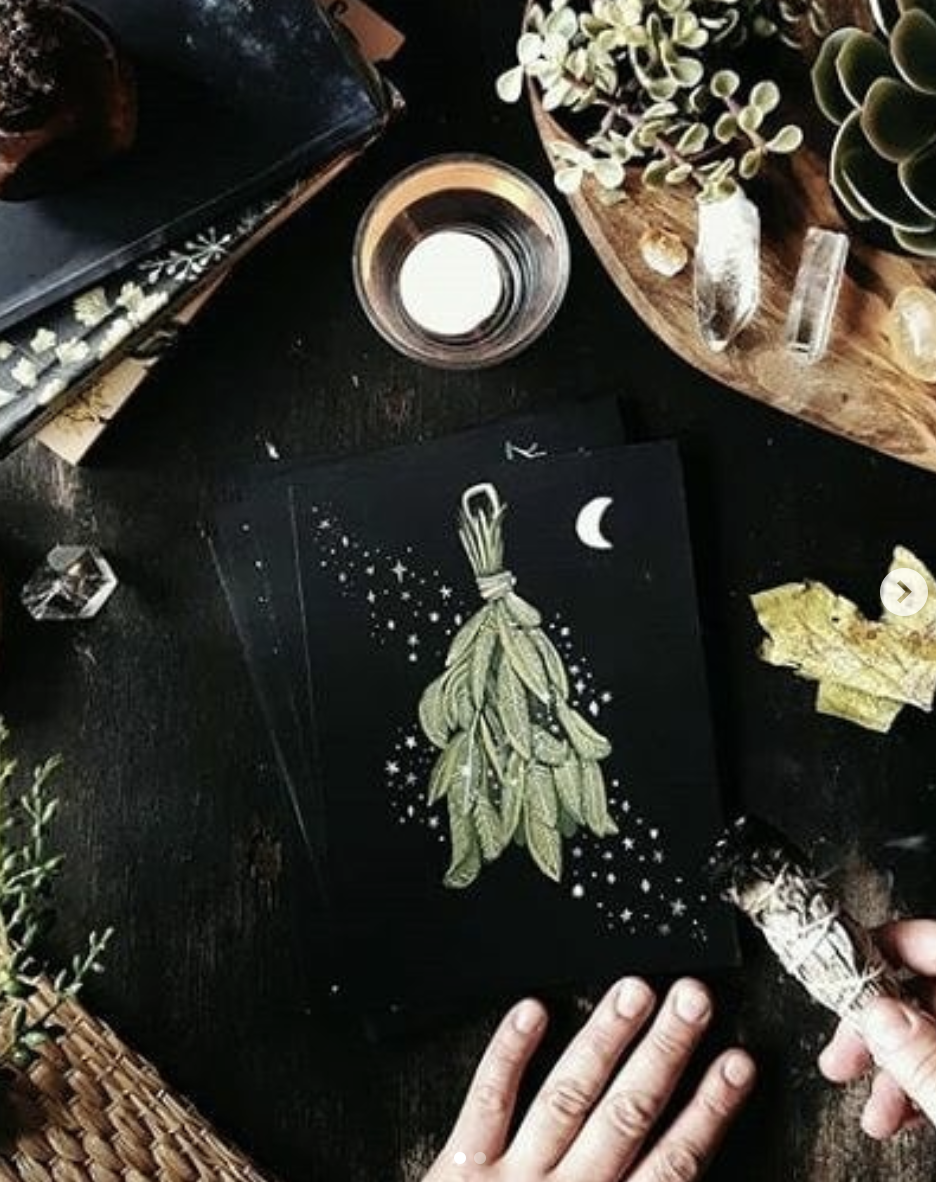The Moon's Watery Vibes Can Be Found in These Lunar Plants

When following the history of Western medicine back to its origins, there exists a deep relationship between astrology and herbalism, a system used to diagnose disease and leverage plants for their healing effects. Born from a collaboration of Egyptian and Greek. knowledge in the Hellenistic period, Iatromathematica was the synthesis between astrology and herbalism.
According to the doctrine of Babylonian melothesia—the science of zodiac signs and the human body—it was thought by the physicians of the Classical and eventually the Medieval and Renaissance periods that the seven visible planets have energetic correspondences on Earth, and that their qualities are reflected in our bodies and constitutions. The planets’ qualities were also observed in the flora, fauna, and minerals of our natural world, and held clues as to what cures they were useful for.
What do the stars have in store for you this month?
Nicholas Culpepper, who had an intimate understanding of astrology and herbalism, is famous for this quote, which reveals the value once placed on astrology and medicine belonging together: “Physick (medicine) without astrology is like a lamp without oil.” Though this cosmology is no longer the prevailing worldview, it is alive and well in the arts of medical astrology, herbalism, and magic, providing a means for us to come into relationship with planetary and plant allies in our holistic practices. Knowing astrology and the qualities of the planets is a “lamp” that illuminates a map to understanding our bodies and their connection to nature and the cosmos.
In this series, we will introduce the correspondences between each of the seven classical planets and the plants they are associated with; we will explore how to see planets in plants so that we can identify their nature. Finding plants in their environments gives us clues as to their uses and qualities, as they have adapted to environments that are similar to imbalances in our bodies we need to treat. Working with these plants medicinally invites their quality into us so that we may take on their balancing effects, helping us enjoy herbs in our daily lives with more confidence and clarity.
Your Vedic astrological chart contains the wisdom of the ages.
[Note: This series is for entertainment and inspirational purposes only, and not intended to replace licensed medical care.]
Part 2: THE MOON
Qualities
The moon is the reflection of the sun’s life-giving light, shining protectively at night, offering guidance and illumination in the darkness. Whereas the sun represents our energy for activity and outer expression, the moon aligns with our regenerative capacity and receptive functions, and so shares a central role in our vitality and health. Being cool and moist in its qualities, the moon is connected to the waters of our body, and just as it exerts a magnetic pull on the tides, its various phases have sway over our moods, cycles, and energy reserves. The moon’s ethereal light has a hypnotic quality that inspires creative visionary states and hones intuition.
Organ Systems
The organ systems traditionally attributed to the moon are the stomach, bowels, bladder, and the bulk of the brain or brain tissue, differentiated from the nervous system function and information processing of Mercury’s connection to the brain. The moon is also connected to the monthly menstrual cycle, a strong example of the tidal relationship it has with our bodies. The moon is tied to mood, sentimentality, sensory memory, and, in the humoral system, it is connected to the phlegmatic constitution, which tends to be cold, damp, and more slow and sedentary. Imbalances in the body associated with the moon are states of excessive dampness and moisture, like water retention, swollen glands, lymphatic stagnation, imbalanced menstrual cycles, colds, rheumatism, colic, and excess mucus.
What’s up with the moon right now?
Lunar Plants
We can identify lunar plants by their soft, thick, juicy leaves. They may have a sweet, watery taste, as in the case of melon, watercress, and lettuce. Lunar plants tend to grow quickly, mirroring the relatively quick movement of the moon in the sky, and thrive in boggy, damp environments, as is the case with water lilies in marshes and mushrooms in dark, damp places. Some lunar plants are pale or bear white flowers, reflecting the color of the Moon and the stars of the night sky. Lunar plants may have a silver underside to their leaves—another celestial signature—offering a clue that the plant will have a helpful effect on Moon type health imbalances. (This can be seen on mugwort and white willow leaves.) Lunar plants tend to be cool, wet, and mucilaginous, bringing soothing, hydration, and lubrication to the body when applied topically or ingested. Plants that help lunar imbalances may also have the opposite qualities of dryness or warmth, as do mugwort or valerian root, to antidote overly wet or cold lunar conditions.
Chickweed (Stellaria media)
This tender, edible green grows low to the ground in the cool, damp conditions of spring. It can be found by its tiny white flowers, which remind us of the night sky. Being cool and moist in its qualities, it is hydrating and nourishing in spring salads. It is a demulcent, meaning it has a soothing, moistening effect. When made into a juice it can be ingested to calm a sore dry throat, and is also a helpful expectorant, meaning it can help remove mucus and congestion from the lungs. A poultice of chickweed is healing to dry, hot, irritated skin conditions, like eczema and psoriasis.
Cleavers (Galium aparine)
Another lunar plant that grows in the spring, cleavers are also cool and moist and helpful for moon-type imbalances in the body. Where chickweed brings cooling and hydration, cleavers help to clear and drain an excess of these. A known diuretic, meaning it encourages the flushing of water retention and promotes urination, cleavers are a prime lunar herb in that they cleanse and support the bladder and encourage lymphatic drainage and circulation. Cleavers are also known to reduce tumors, which are considered by traditional medicine to be dense, stagnated mucus and impurities that take root in the body when its circulation is poor and is overloaded toxins. Cleavers also have an astringent effect, meaning they can dry overly wet, boggy conditions in the body, and tone up and lax tissues that so that they can heal and function efficiently. Cleavers also bloom with small lunar flowers and have a curious Velcro-like quality, hence their name. This clinginess of cleavers is interesting to note, as some lunar signifiers are sentimentality, and sensitivity, represented by a tendency to cling to another for love and nurturance.
White Willow (Salix alba)
Reference to the medicinal use of white willow goes all the way back to the Greek physician Hippocrates in 400 BC, when the foundations of western medicine and herbalism began. It is thought to be cold and dry, a contrast to the previous lunar herbs mentioned, which are cold and moist just as the moon is thought to be in its properties. The dry qualities of willow are constrictive, reducing swelling and excess moisture, which offers an antidote to lunar dampness and fluid build-up. Willow bark was chewed to relieve toothache, and general pain, and it is now known to contain salicin, an ingredient in Aspirin. Willow bark also contains flavonoids that help with the reduction of fever and inflammation. It is a known cramp and pain reliever for the menstrual cycle, which is deeply connected to the monthly cycle of the moon.
Get 5 minutes Astrologer chat for $1. Connect now.

